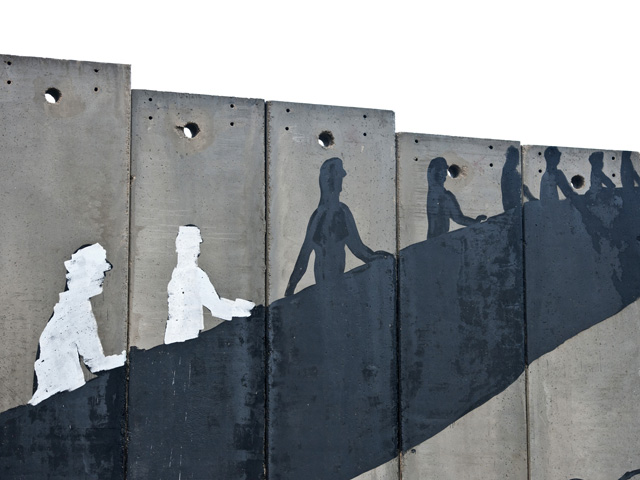
By Dr Harry Hagopian, Middle East North Africa (MENA) Consultant
The latest opinion piece from our consultant on the Middle East North Africa (MENA) region, Dr Harry Hagopian recalls ‘The Six-Day War’ of 1967 and the subsequent 48 years of Arab-Israeli tension, conflict and occupation. Originally published on Dr Hagopian’s website epektasis.net.
****
It was the French philosopher Albert Camus who once wrote that you cannot create experience, you must undergo it. I recalled his words yet again earlier this week when I read Hisham Melhem’s powerful reflections on the Naksa – setback is as good a translation as any – of 1967 and its spill-over into MENA region.
Hisham Melhem’s piece shook my imagination enough that I too started thinking of my own experiences stretching back to June 1967 and to what my generation has grown up to call – numbly – ‘The Six-Day War’.
I was a mere toddler hardly out of diapers when the six-day war of June 1967 broke out. My mum, dad and I were living in our home in Ramallah at the time. I was too young to recall all the hype that preceded the war although my grandfather briefed me on them as I grew older. The expectations in 1967 – not unlike 1948 and 1956 in some sense – were of a resounding victory by the Arab countries. Yet, the defeat was so ignominious that huge swathes of territories – and with them the collective Arab pride – were lost as a consequence.
I can still recall the juddering sound of Jordanian Hawker Hunters as well as the supersonic Israeli Mirages in the skies of Ramallah just before the fall of the city to General Moshe Dayan’s advancing forces. My second recollection is of coming out of the house a couple of days later and examining the debris and then also of our neighbours coming out of their houses too to chat about the new occupation of Jordanian – it was not yet patently Palestinian – lands.
My third vague recollection is of a group of friends marshalling their forces to ensure that the neighbours were fine and had the basic necessities before the shops opened again. And finally, a fourth grim recollection was the sight of Israeli soldiers coming into our neighbourhood to conduct a census and also check that we did not have any guns in the house.
48 years have already lapsed since those hazy memories intruded into my head today. Almost five decades of occupation – the longest in living memory – where the facts on the ground have altered drastically. At the start of the occupation, my grandfather reassured me later, almost everyone had expected Israel to withdraw quickly in return for a comprehensive peace with its Arab neighbours. Mind you, the political environment was not so polarised at the start of the occupation, perhaps because the novelty of the occupation had simply not sunk in yet. I recall Moshe Dayan – a renowned collector of archaeological artefacts – visiting the Palestinian Pottery (a ceramics shop run by our friends) to buy hand-crafted items and Foreign Minister Abba Eban even seeking my dad’s medical consultation in his clinic.
But that was 1967 and this is 2015! A recent ‘infographic’ posted by The Institute for Middle East Understanding reflects in stark terms the steep price of those 48 years of sordid occupation. Relying on various NGO sources, it shows that 28,000 Palestinian homes and structures were demolished, over 800,000 olive trees were uprooted, 100,000 Palestinians have been detained without trial, 525,000 Jewish settlers are living in 230 illegal settlements and there are roughly 500 checkpoints or obstacles dotted across the whole of the West Bank.
Those 48 years have also witnessed successive aborted peace initiatives – Madrid, Wye, Geneva, Indianapolis, Camp David – when Israel has become a cruel victimiser enforcing an apartheid system on an occupied people. Its laws are discriminatory and its geographical tentacles are slowly but surely robbing Palestinians of their lands and – inherently – their hopes for dignity and freedom. As a second-track negotiator during the Oslo years myself, I know that the final-status core issues included the final borders, Jerusalem, refugees, settlements and water resources. Today, they still remain unresolved and the process has turned from a hopeful cry for peace to one of dour inertia.
But it is not all the fault of Israel, is it? True, Israel is the occupier, and it bears the brunt of the responsibility according to International law and the Geneva Conventions, but Arab countries have also often misused the Palestinian conflict for their own purposes. They have traded vacuous slogans for the sake of controlling their subjects, keeping them quiescent and maintaining the pathological determination not to relinquish the reins of power – and money.
Parallel to an insidious occupation and a dysfunctional Arab reality is also the fact that the Palestinian umbilical cord holding the West Bank and Gaza together has been severed too. Neither Hamas nor the PLO, and certainly not the Palestinian Authority, are sincere about healing the internal Palestinian wounds and re-engaging seriously as one people. After all, their aspirations today are antithetical. Is it any wonder that the new Palestinian generations are seeking their vox populi and own solutions against the occupation through a rigorous system of boycotts, divestments and sanctions?
48 years: as Albert Camus opined, experience is critical. But it becomes helpless once occupation manacles freedom.